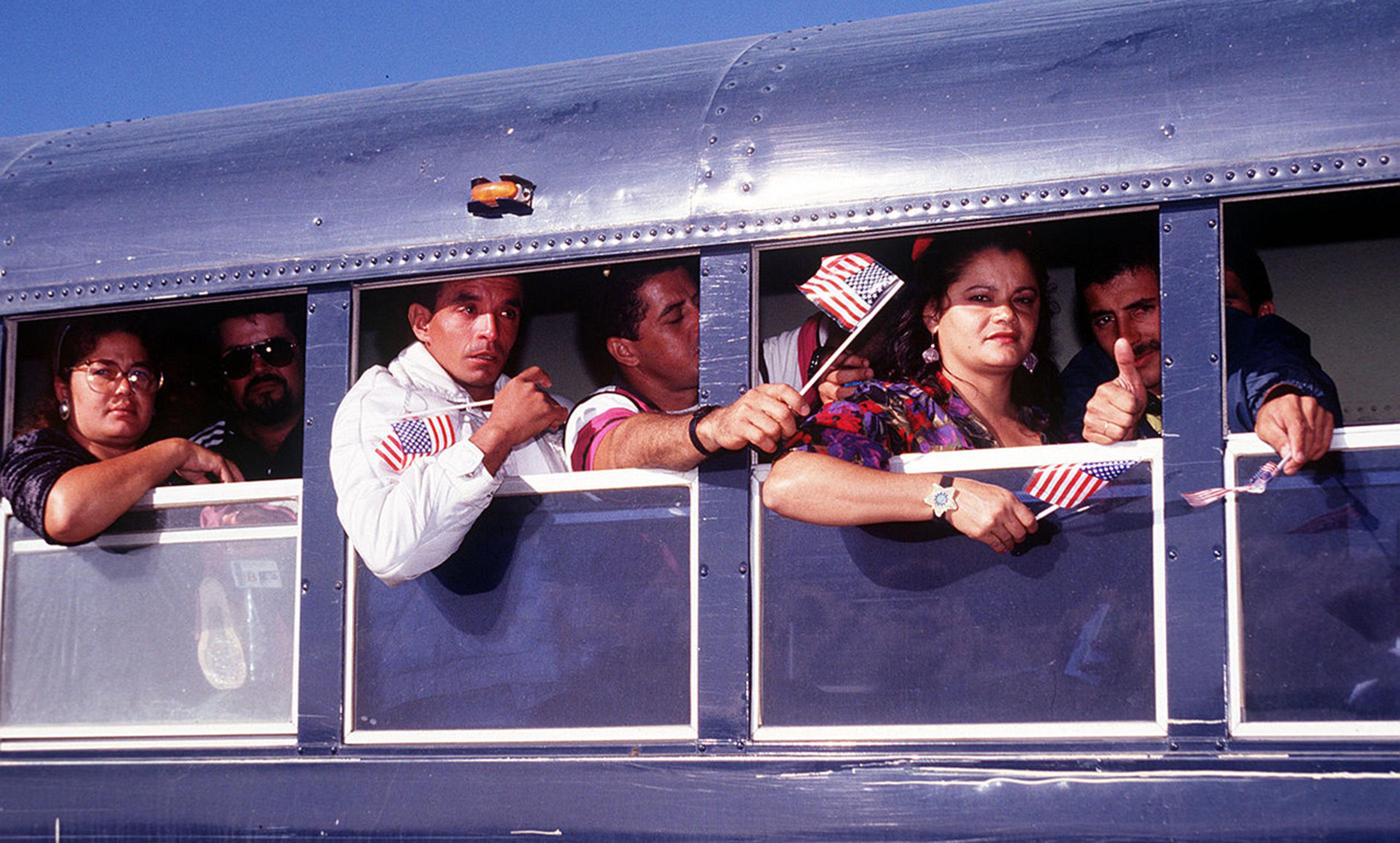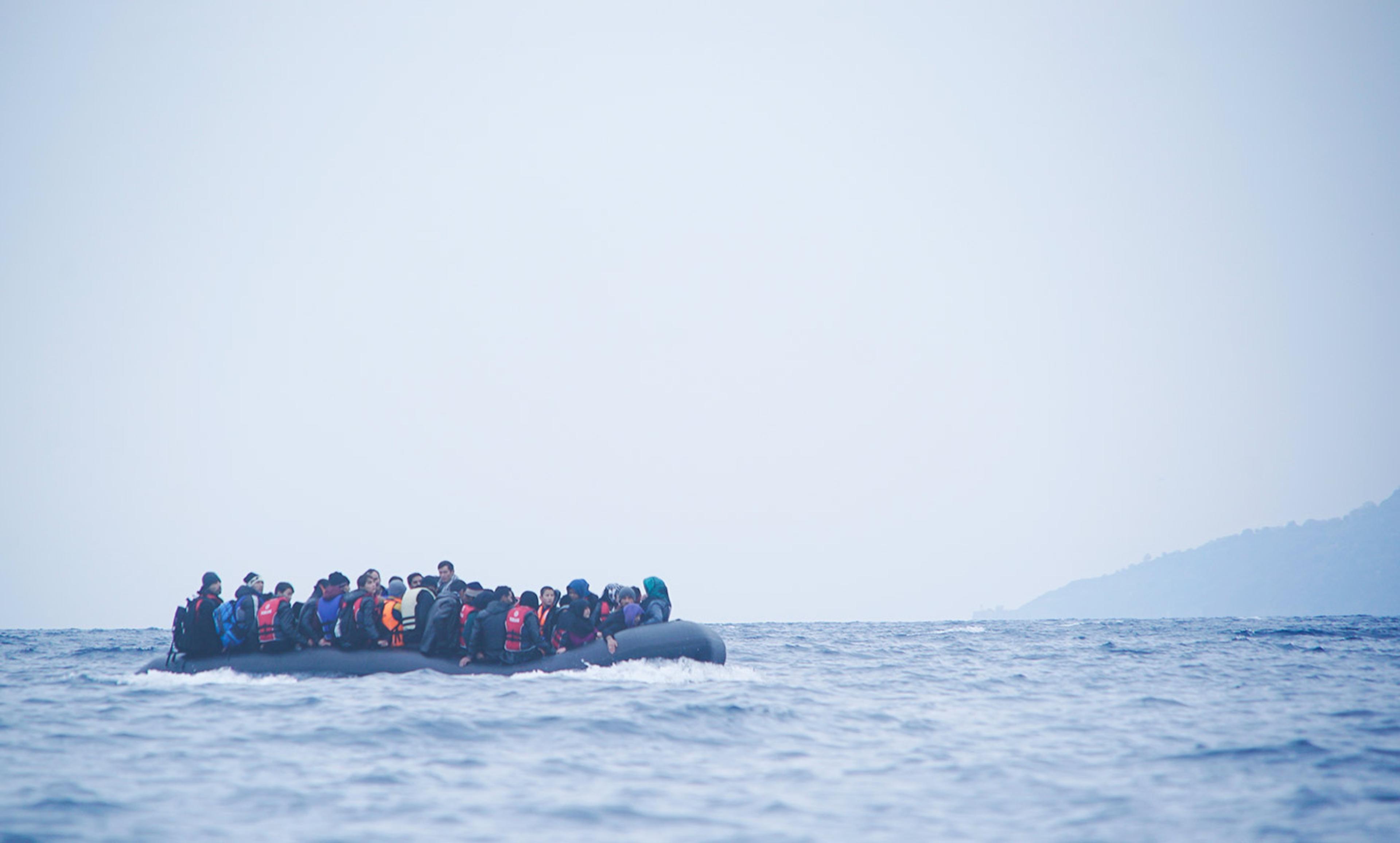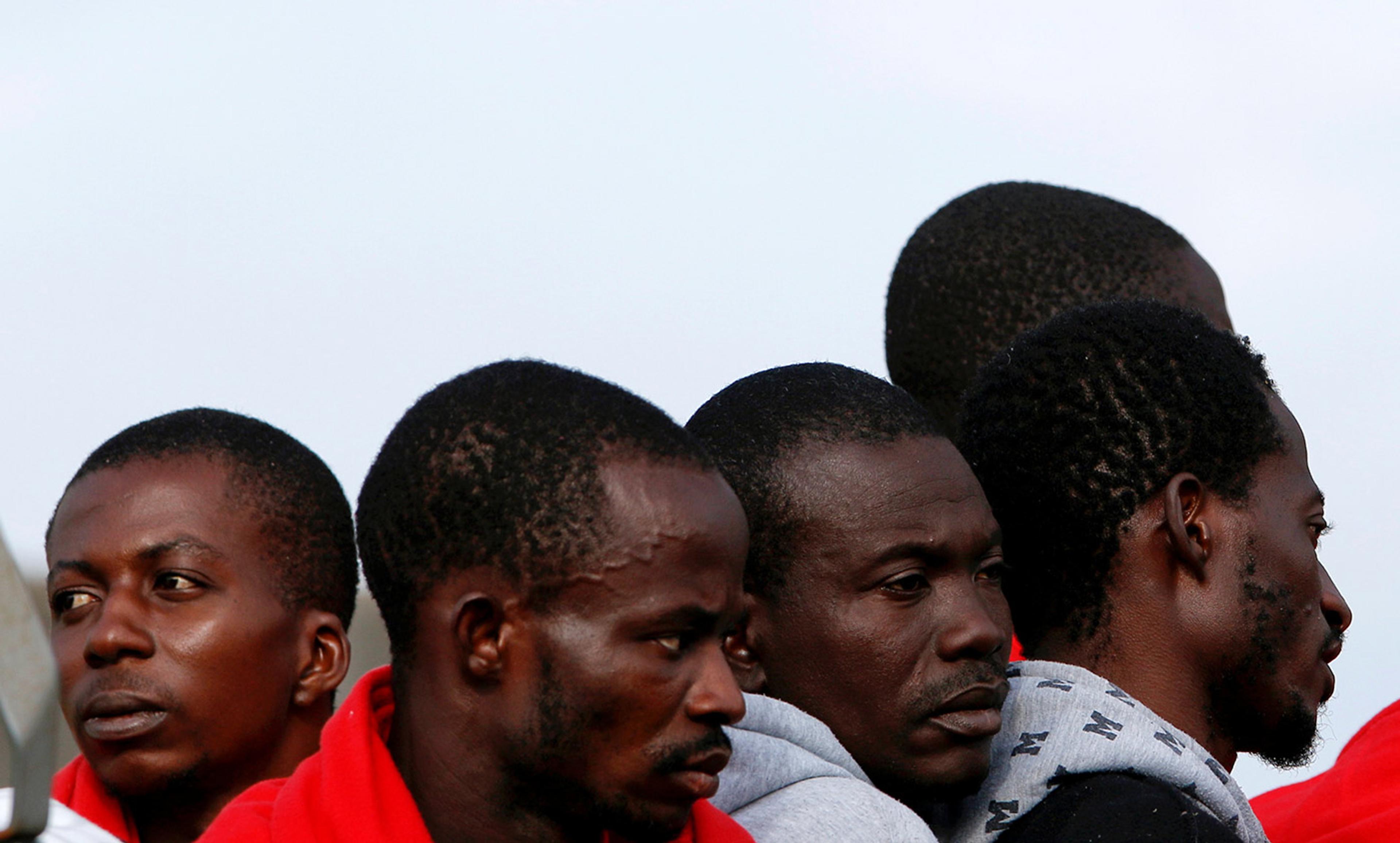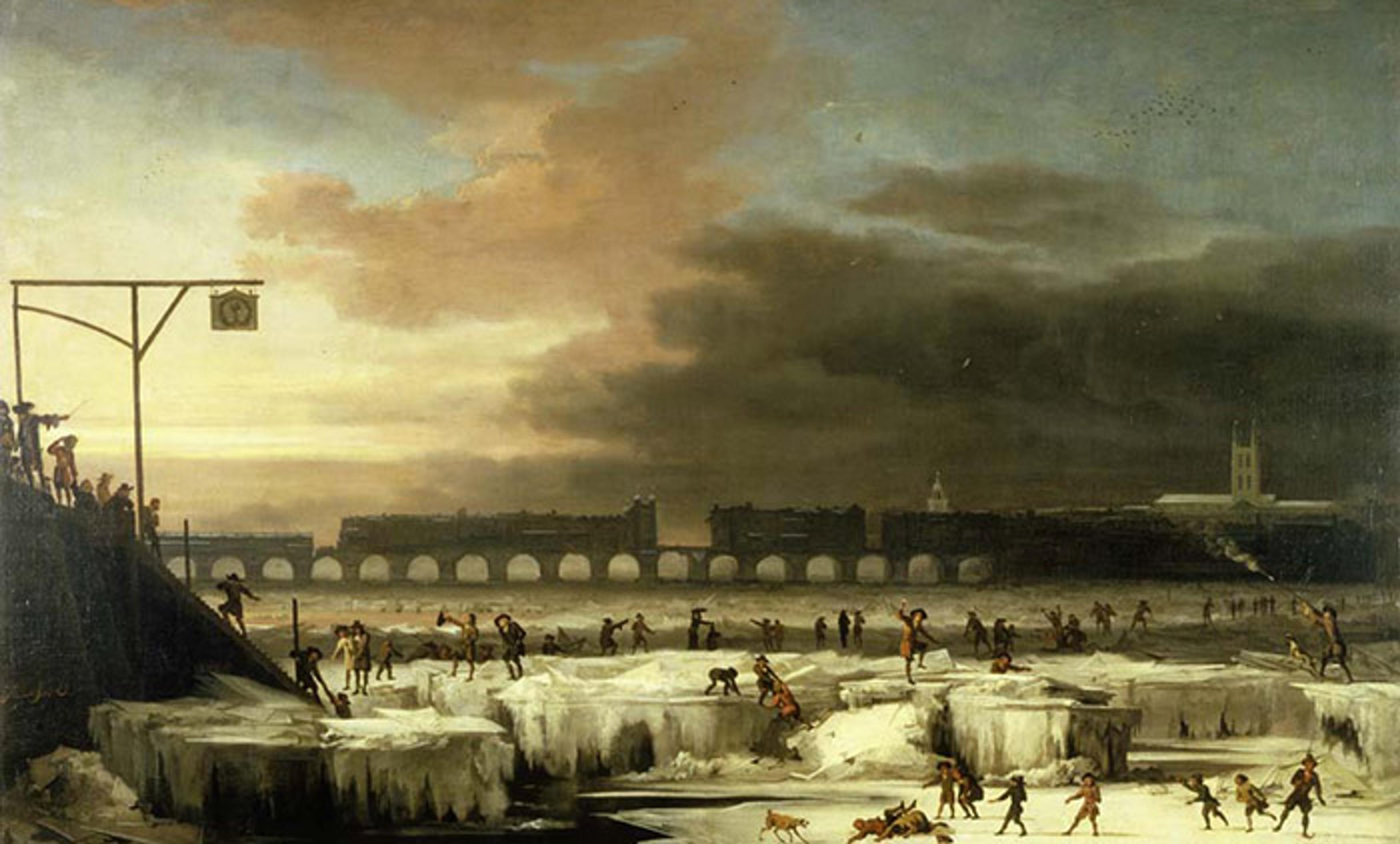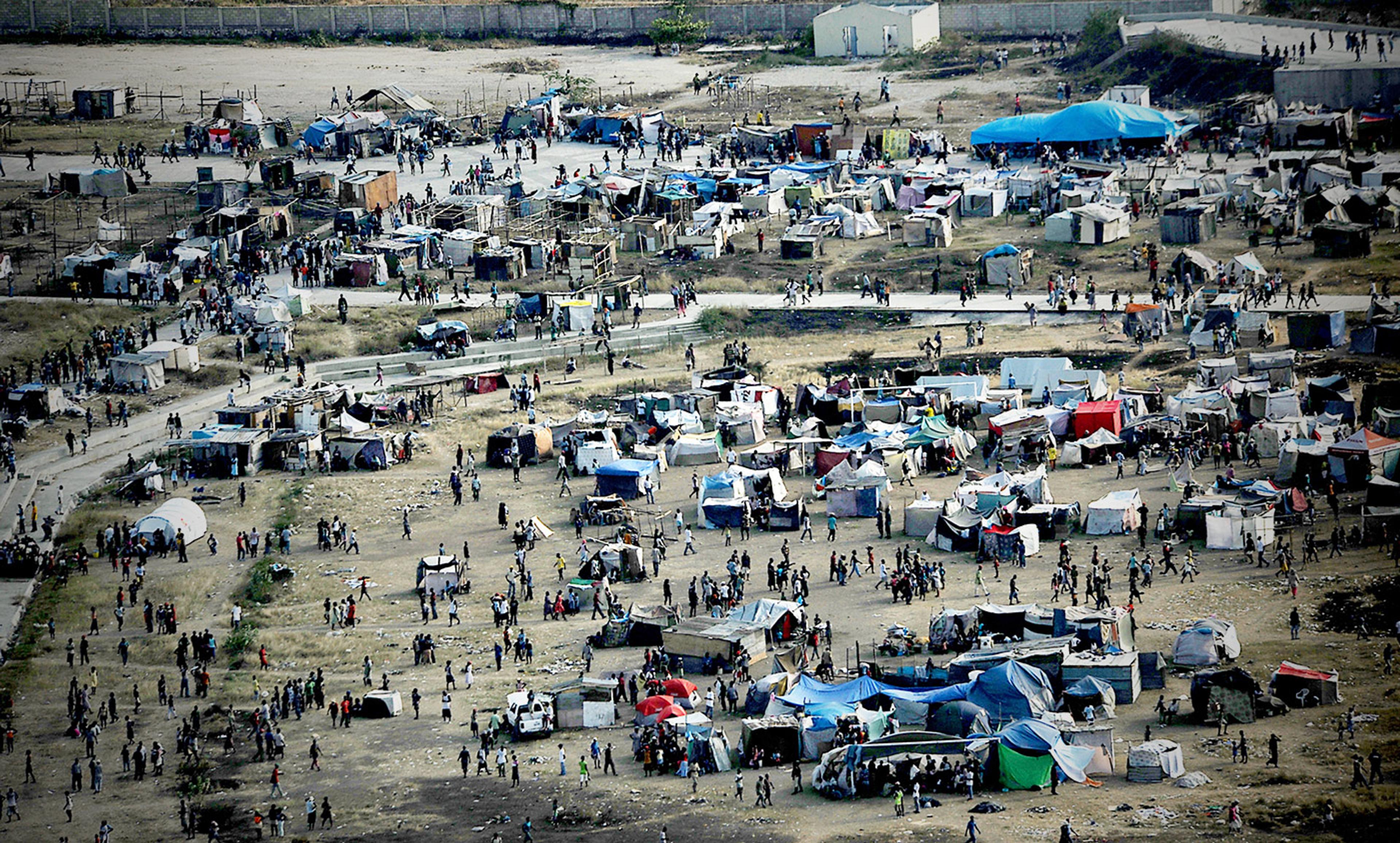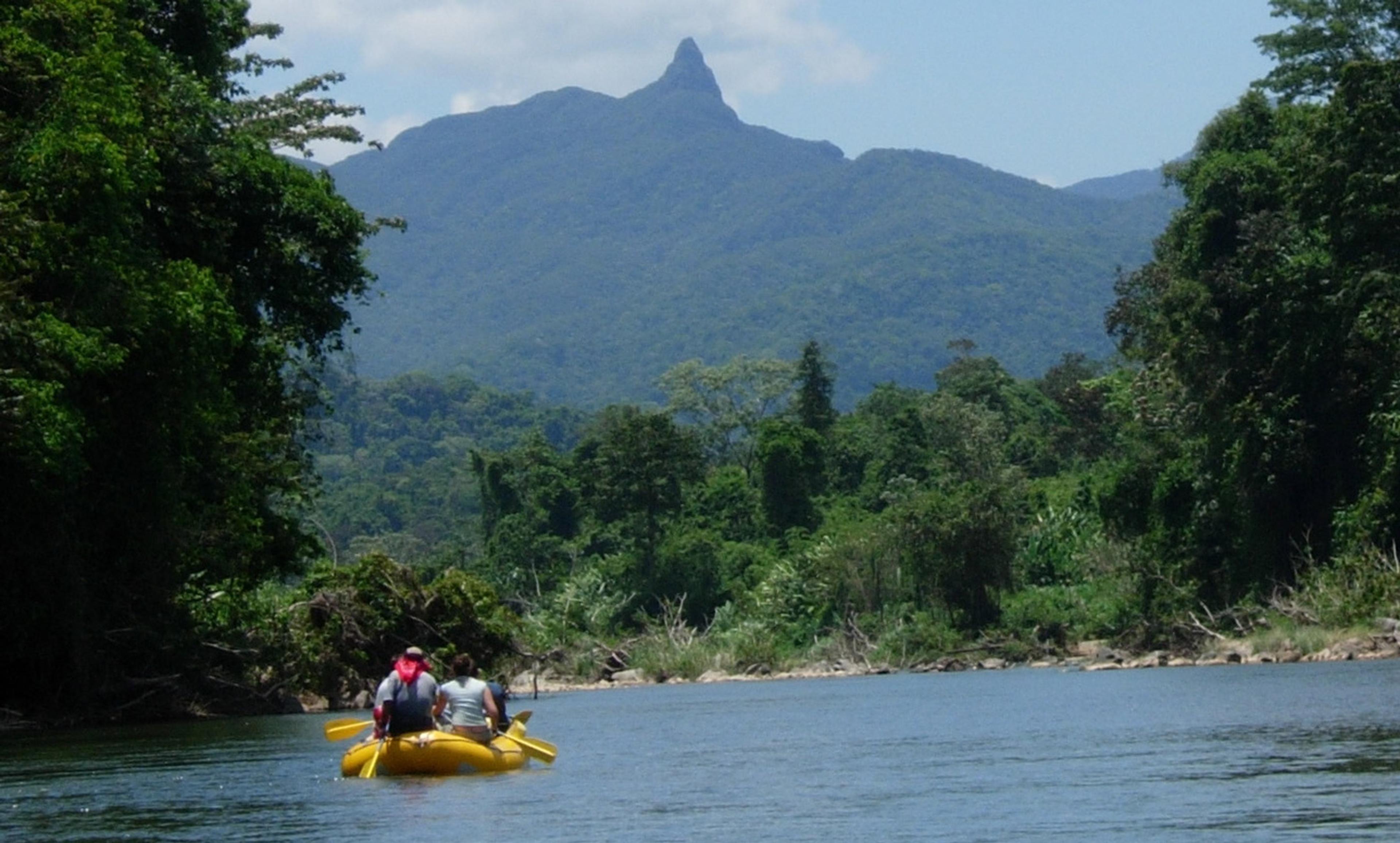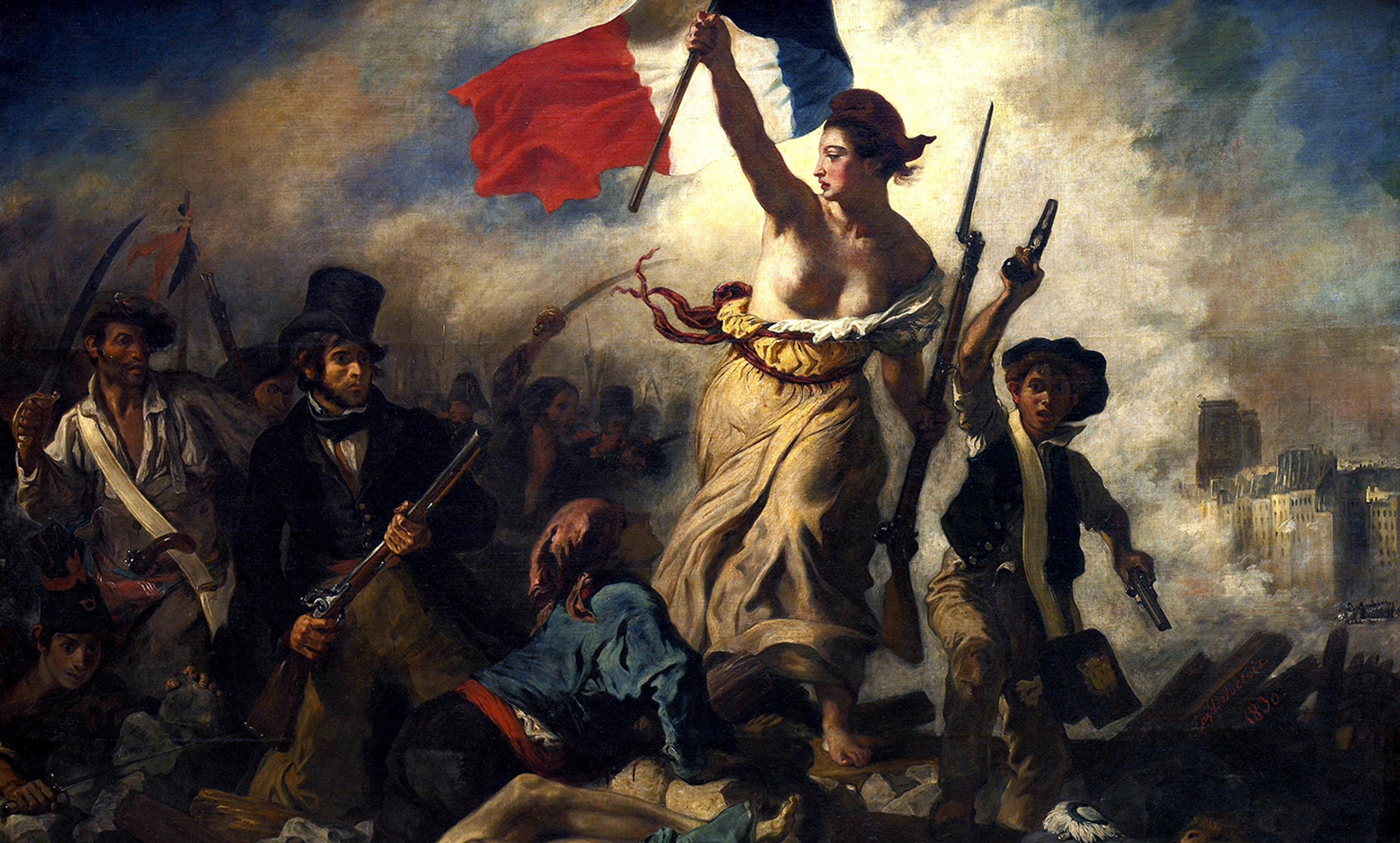Cuban refugees granted asylum in the USA in September 1996. Photo courtesy Wikipedia
In the late 17th century, small bands of refugees began making their way into Spanish Florida. At first, they arrived in small numbers, carrying little more than the clothes on their backs, and without generating much interest. The material demands they might place on the Spanish state were at best modest. Yet these refugees and their experience in Spanish Florida would raise nettlesome political questions. Refugees have a special power to unsettle political communities, one that far outstrips their claim on practical resources.
The refugees to Spanish North America came from all over what is now Florida and Georgia, and headed primarily to St Augustine, the region’s Spanish hub. By 1700, St Augustine was more than a century old, and had endured starvation, invasions, slaving, disease, pirates and isolation. Refugees were not in any unequivocal way its most obviously dangerous challenge. But that would soon change.
During the first decade of the 18th century, the War of the Spanish Succession, known as Queen Anne’s War in the English colonies, reached the American colonies. By the end of the war, indigenous refugees had helped challenge Spanish control of Florida. These small, sporadic groups morphed into a stream of people trying to escape from attacks and slaving raids in their Apalachee, Timucua, Chacato, Yamasee, Ais, Mayaca and Jororo homelands. The movement of hundreds of refugees from native communities supposedly under Spanish protection undermined Spanish claims to the land, and raised doubts about the stability of their empire. If the Spanish could not control their borders or protect their subjects, what claim did they have over the land?
The war is better known in North America for the related 1704 raid on Deerfield, Massachusetts, one of the most studied events in colonial American history. But it had a profound impact in the American South. As Spanish, French and English interests competed to control the region’s geopolitics, they also caused large civilian casualties and the displacement of the native populations. By the early 18th century, there were more and more desperate refugees in Spanish Florida than ever before. In January 1704, a force of Creek, Yamasee, Apalachicola and English soldiers attacked Apalachee, the most western province in Spanish Florida. These attacks proved incredibly brutal – burnt and dismembered bodies, impaled women and children, and mutilated cadavers terrorised the survivors. Apalachees fled their homes in horror, adding to the influx of refugees.
Apalachees were different from earlier refugees, who had limited or no previous interactions with the Spanish. They were Spanish subjects. Helping them was not a matter of benevolence. If Spain couldn’t take care of its subjects, the authority of the empire would come into question. In 1706, within two years of the first wave of Apalachee refugees, San Luís, the main Spanish garrison and mission in Apalachee, was overrun. Unable to defend, house or even feed the displaced Indians, the Spanish had to abandon their missionising efforts in the region. It was the English and their allies, particularly the Yamasees, Creeks and Apalachicolas, who attacked Spanish holdings. But it was native refugees who destabilised Spanish power. Unable to take care of those under their protection, the Spanish lost Indian subjects and allies, and without these allies Spanish imperial claims carried little authority. San Luís became a large garrison defending no one.
The Spanish had previously seen the refugees as menacing. Chacato Indians, who were some of the early refugees of English violence welcomed in Apalachee, were regarded as outsiders. Chacatos were often blamed for crime and disorder. But when English forces reached San Luís and destroyed most of Apalachee, members of the wealthiest Spanish families found themselves suddenly displaced. Spanish officials could no longer ignore the problem of refugees because they had become them.
The Spanish then began describing refugees as an asset, a way to counter the enemy. They would not only increase the size of the Spanish garrison, but also held no sympathies for the English or their Indian allies. In this moment of war and scarcity, the Spanish realised that turning away refugees only strengthened their enemies. Every one of them who found a welcome with the Spanish was potentially one less enemy to combat in the future. Apalachee refugees demanded protection and support. They wanted peace and their livelihoods returned. And with these basic human needs they tested the limits of Spanish imperial resolve.
Refugees are an especially potent symbolic challenge to political authority. In 18th-century Spanish Florida, welcoming refugees placed a real stress on already strained resources, but denying access outright to forcibly displaced people was seen as an unsustainable long-term strategy.
Today’s refugee crisis is fundamentally different from the early-modern one, and not merely in terms of the scale and violence. The point is not to compare the Apalachee Province with Syria, or to look back at a time when refugee crises could be managed with simple resource distribution and the opening of borders. The point is to see early-modern empires and refugee crises developing alongside each other. These mobile and politically feeble outsiders pushed Florida officials to reconsider who got to be included and protected by the Spanish Crown, and on what terms. Could an expanding empire simply disregard the people it displaced? Did the fate of refugees matter? Were clearly demarcated and defended borders the solution?
Control of people, not borders, became the real test for 18th-century Florida officials. Apalachees might have been a tiny spec in the larger Spanish empire, but they exposed a much larger struggle of authority and self-determination. That is what refugees do after all: they show us the messy, deep and often quite violent connections that bind our world together – even when it seems like it’s falling apart.
